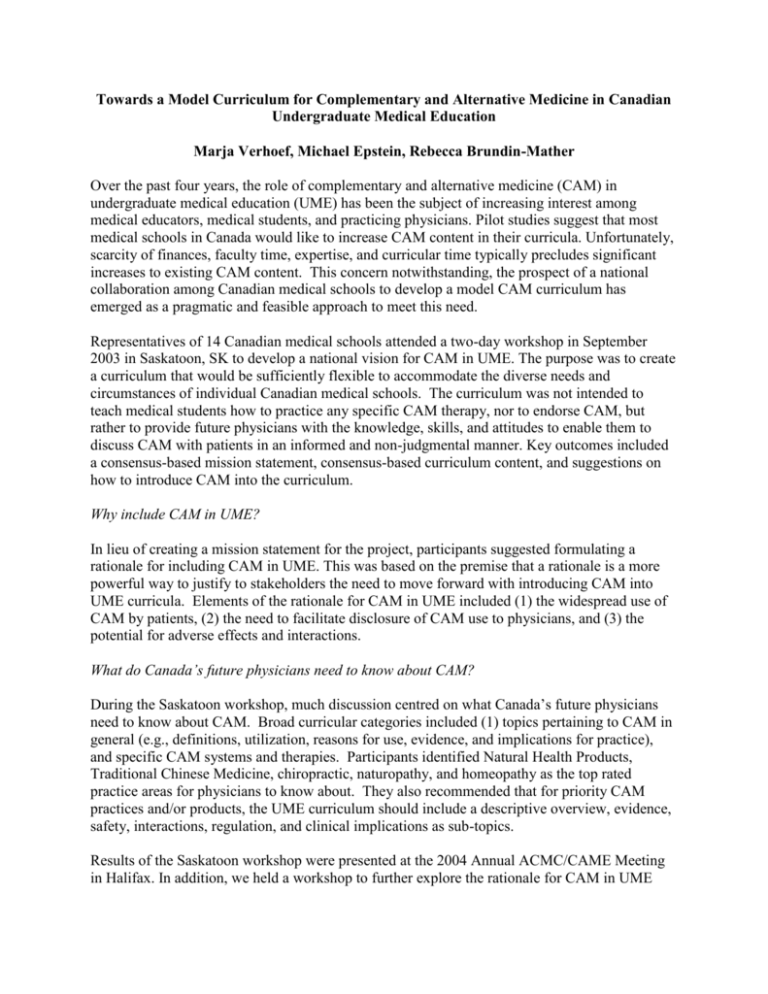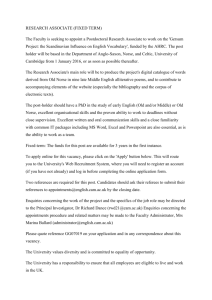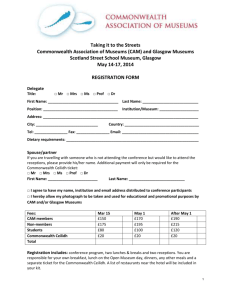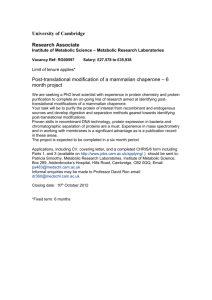Towards a Canadian Curriculum for Complementary and Alternative
advertisement

Towards a Model Curriculum for Complementary and Alternative Medicine in Canadian Undergraduate Medical Education Marja Verhoef, Michael Epstein, Rebecca Brundin-Mather Over the past four years, the role of complementary and alternative medicine (CAM) in undergraduate medical education (UME) has been the subject of increasing interest among medical educators, medical students, and practicing physicians. Pilot studies suggest that most medical schools in Canada would like to increase CAM content in their curricula. Unfortunately, scarcity of finances, faculty time, expertise, and curricular time typically precludes significant increases to existing CAM content. This concern notwithstanding, the prospect of a national collaboration among Canadian medical schools to develop a model CAM curriculum has emerged as a pragmatic and feasible approach to meet this need. Representatives of 14 Canadian medical schools attended a two-day workshop in September 2003 in Saskatoon, SK to develop a national vision for CAM in UME. The purpose was to create a curriculum that would be sufficiently flexible to accommodate the diverse needs and circumstances of individual Canadian medical schools. The curriculum was not intended to teach medical students how to practice any specific CAM therapy, nor to endorse CAM, but rather to provide future physicians with the knowledge, skills, and attitudes to enable them to discuss CAM with patients in an informed and non-judgmental manner. Key outcomes included a consensus-based mission statement, consensus-based curriculum content, and suggestions on how to introduce CAM into the curriculum. Why include CAM in UME? In lieu of creating a mission statement for the project, participants suggested formulating a rationale for including CAM in UME. This was based on the premise that a rationale is a more powerful way to justify to stakeholders the need to move forward with introducing CAM into UME curricula. Elements of the rationale for CAM in UME included (1) the widespread use of CAM by patients, (2) the need to facilitate disclosure of CAM use to physicians, and (3) the potential for adverse effects and interactions. What do Canada’s future physicians need to know about CAM? During the Saskatoon workshop, much discussion centred on what Canada’s future physicians need to know about CAM. Broad curricular categories included (1) topics pertaining to CAM in general (e.g., definitions, utilization, reasons for use, evidence, and implications for practice), and specific CAM systems and therapies. Participants identified Natural Health Products, Traditional Chinese Medicine, chiropractic, naturopathy, and homeopathy as the top rated practice areas for physicians to know about. They also recommended that for priority CAM practices and/or products, the UME curriculum should include a descriptive overview, evidence, safety, interactions, regulation, and clinical implications as sub-topics. Results of the Saskatoon workshop were presented at the 2004 Annual ACMC/CAME Meeting in Halifax. In addition, we held a workshop to further explore the rationale for CAM in UME and to identify what schools can do to accommodate CAM-related curriculum content. The workshop discussion involved widespread active participation by roughly two dozen attendees. The success of the Saskatoon and Halifax workshops has greatly exceeded original expectations. The opportunity for participants to share experiences and insights on a topic that, in some schools, is considered a fringe area, was invaluable. Additional progress has subsequently been made towards developing a uniquely Canadian CAM curriculum. At a recent meeting of selected project members, a proposed two-part CAM curriculum was reviewed. One part of this curriculum will be a consensus-based common framework that consists of three sections: Foundations for CAM, CAM Basics, and CAM in Clinical Practice. The second part will be a repository of innovative and diverse learning resources that will help support and inform the first part. The CAM in UME project is guided by several design principles, the foremost being flexibility, critical appraisal, and Canadian content. Progress on this initiative has been due to a dedicated and expanding group of students and faculty from medical schools across Canada. Additional information about the CAM in UME project can be found at http://www.ucalgary.ca/CAMinUME, or by contacting Dr. Marja Verhoef at mverhoef@ucalgary.ca.







